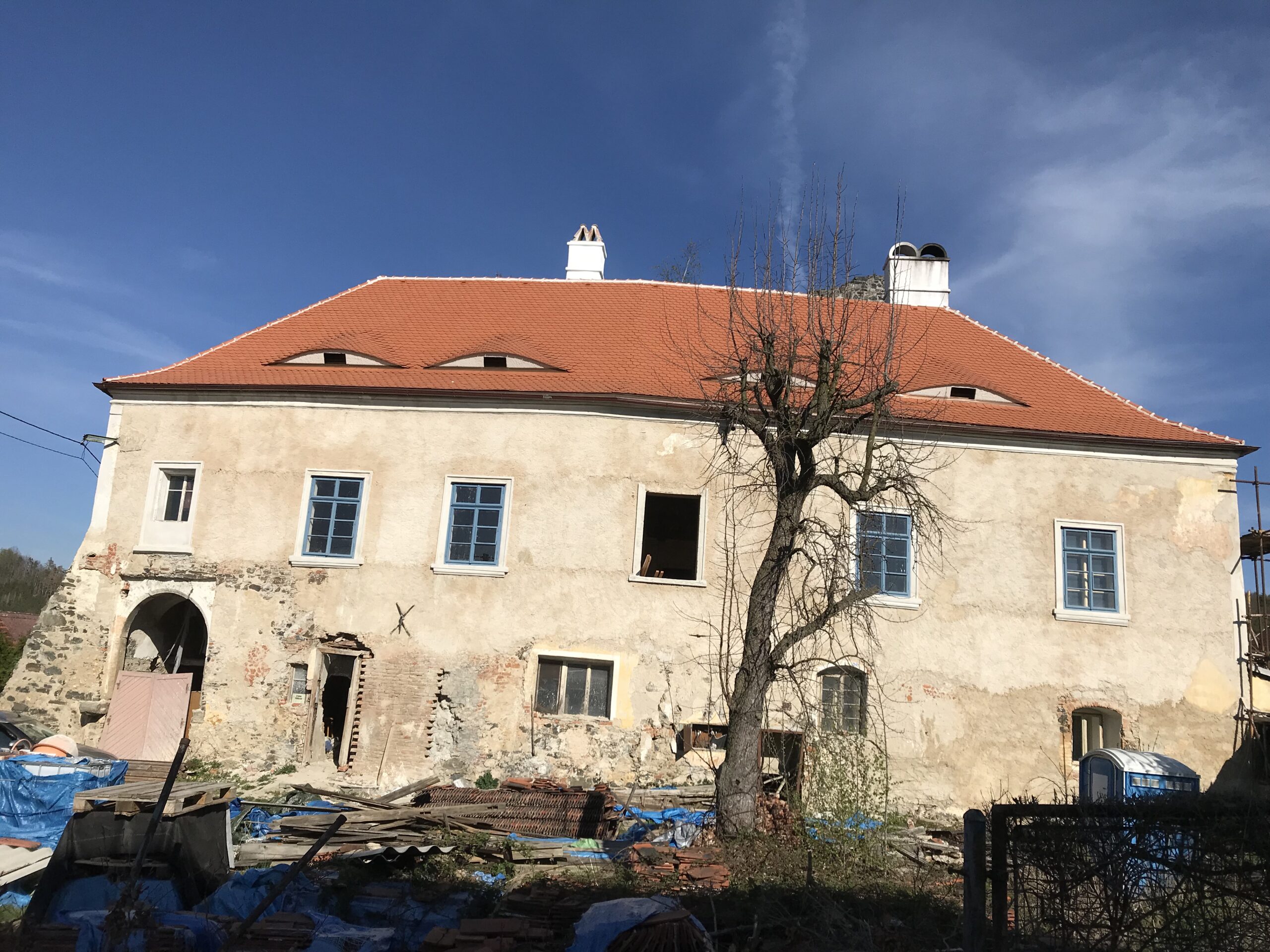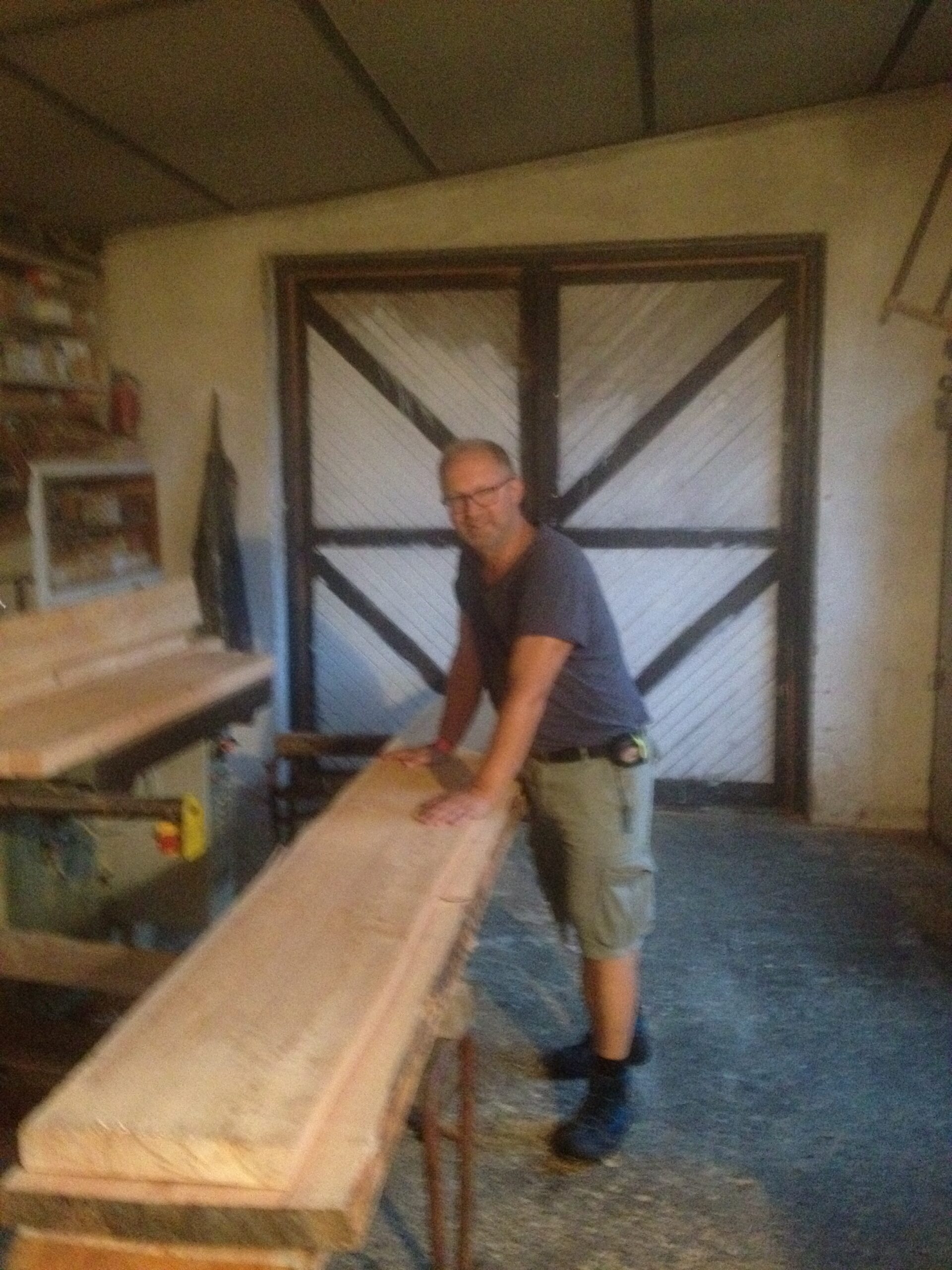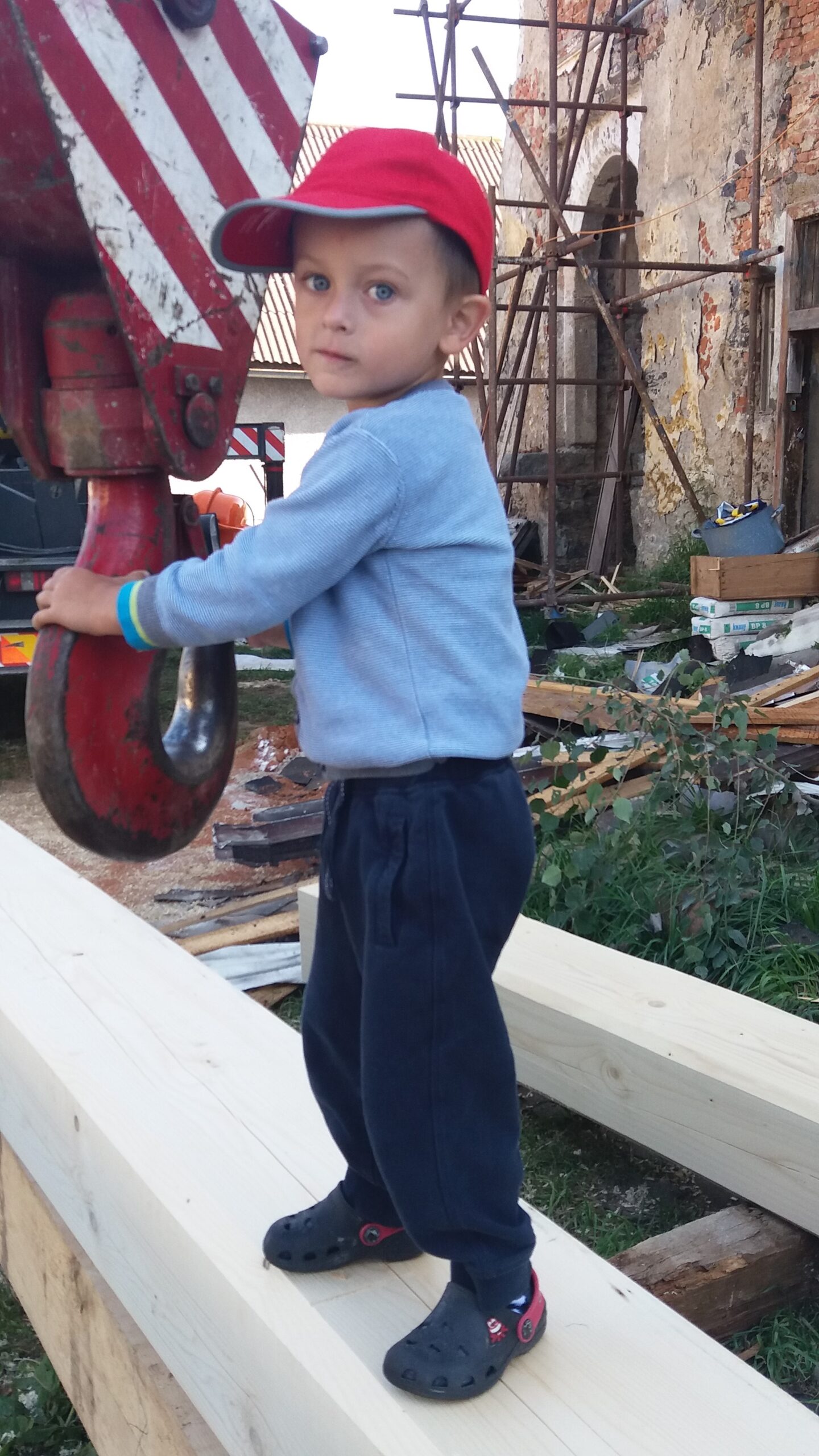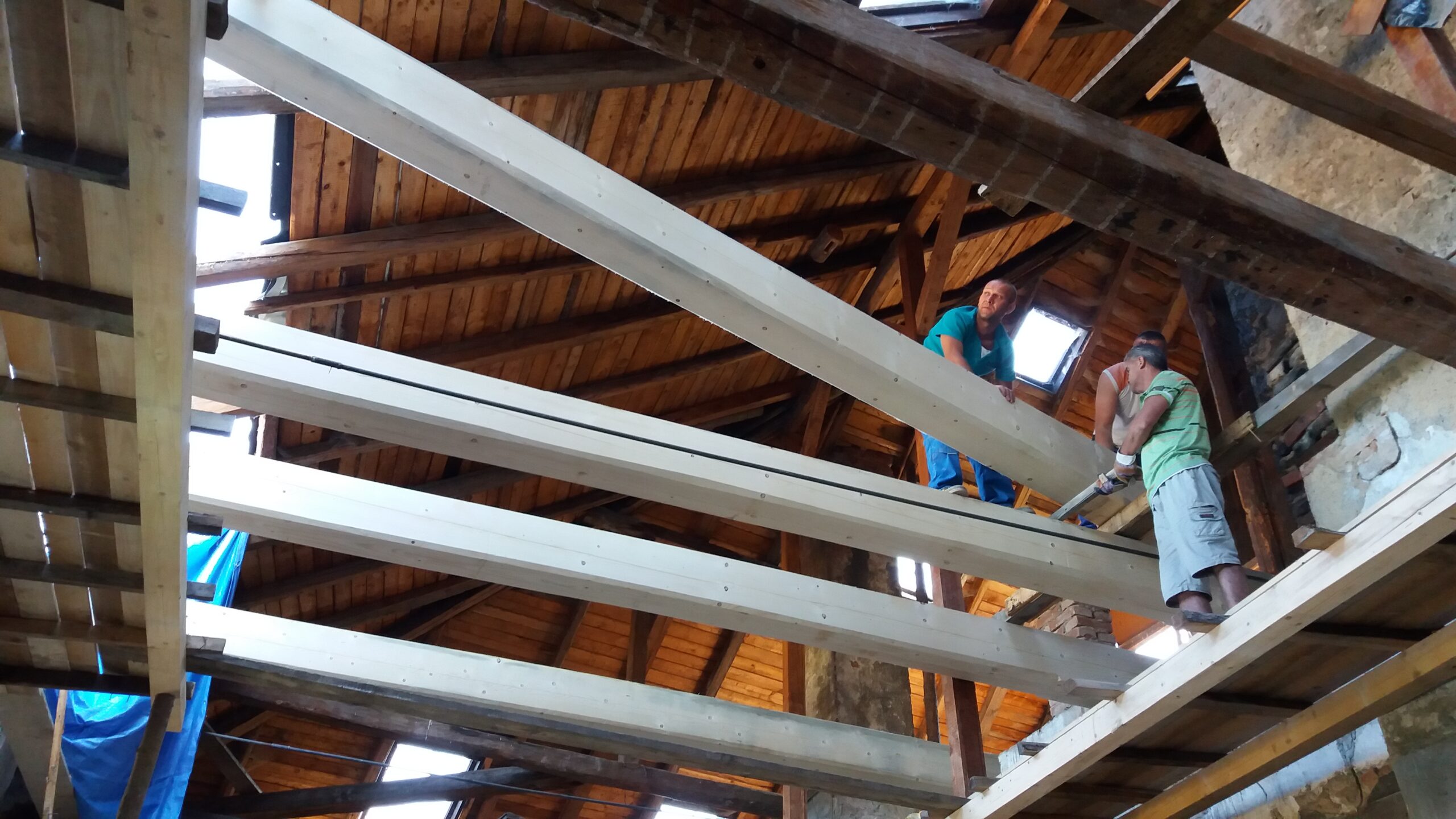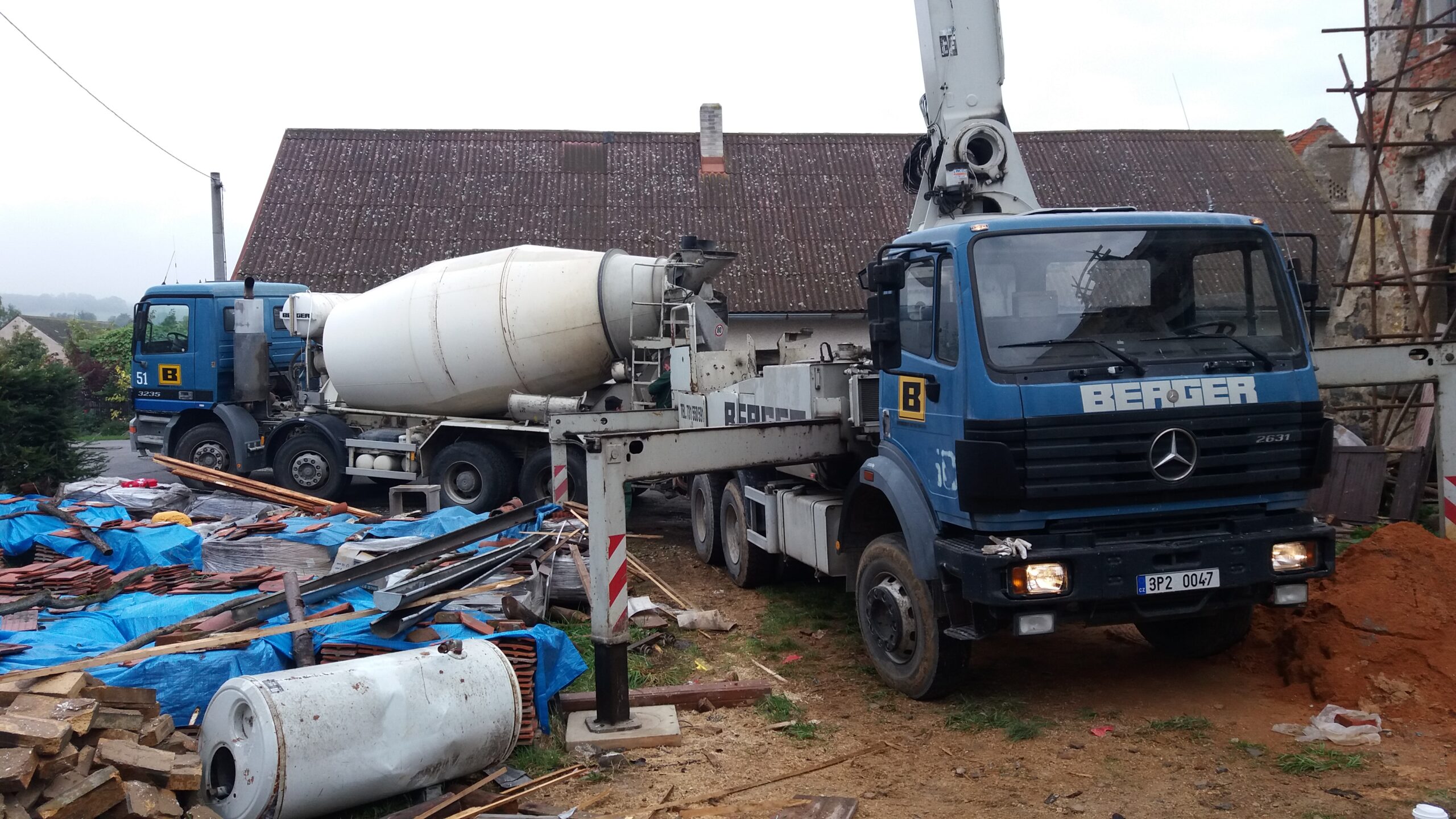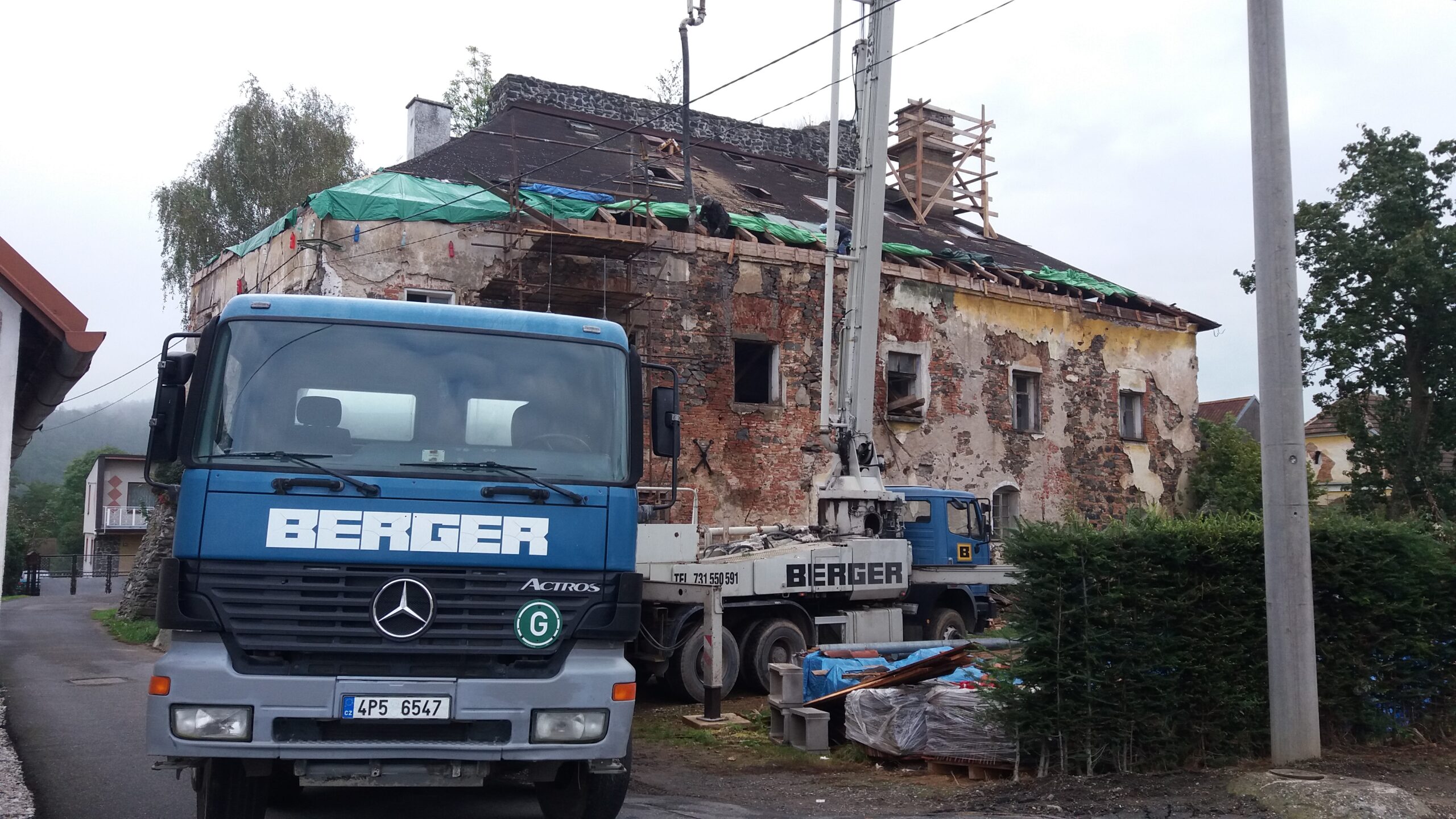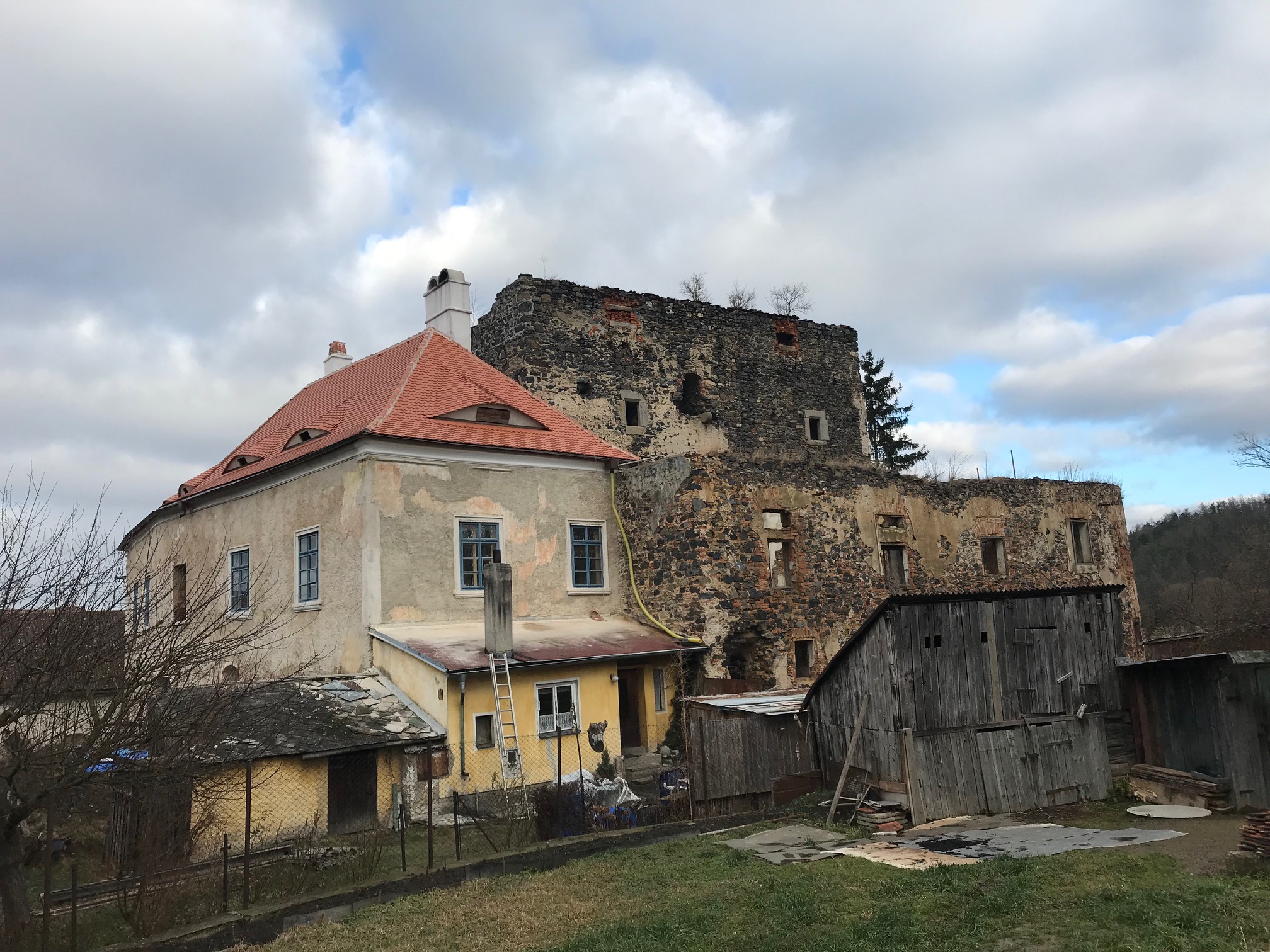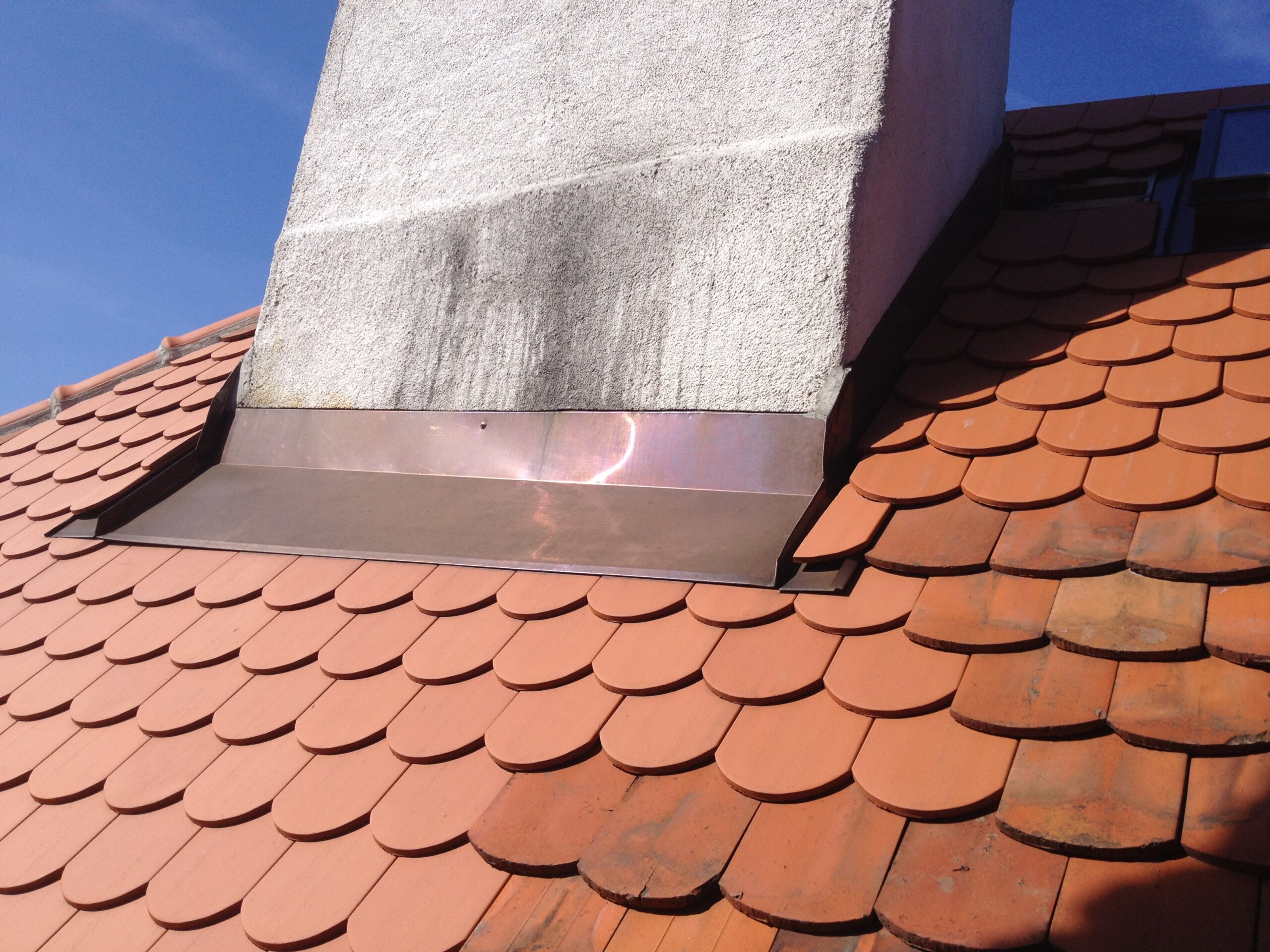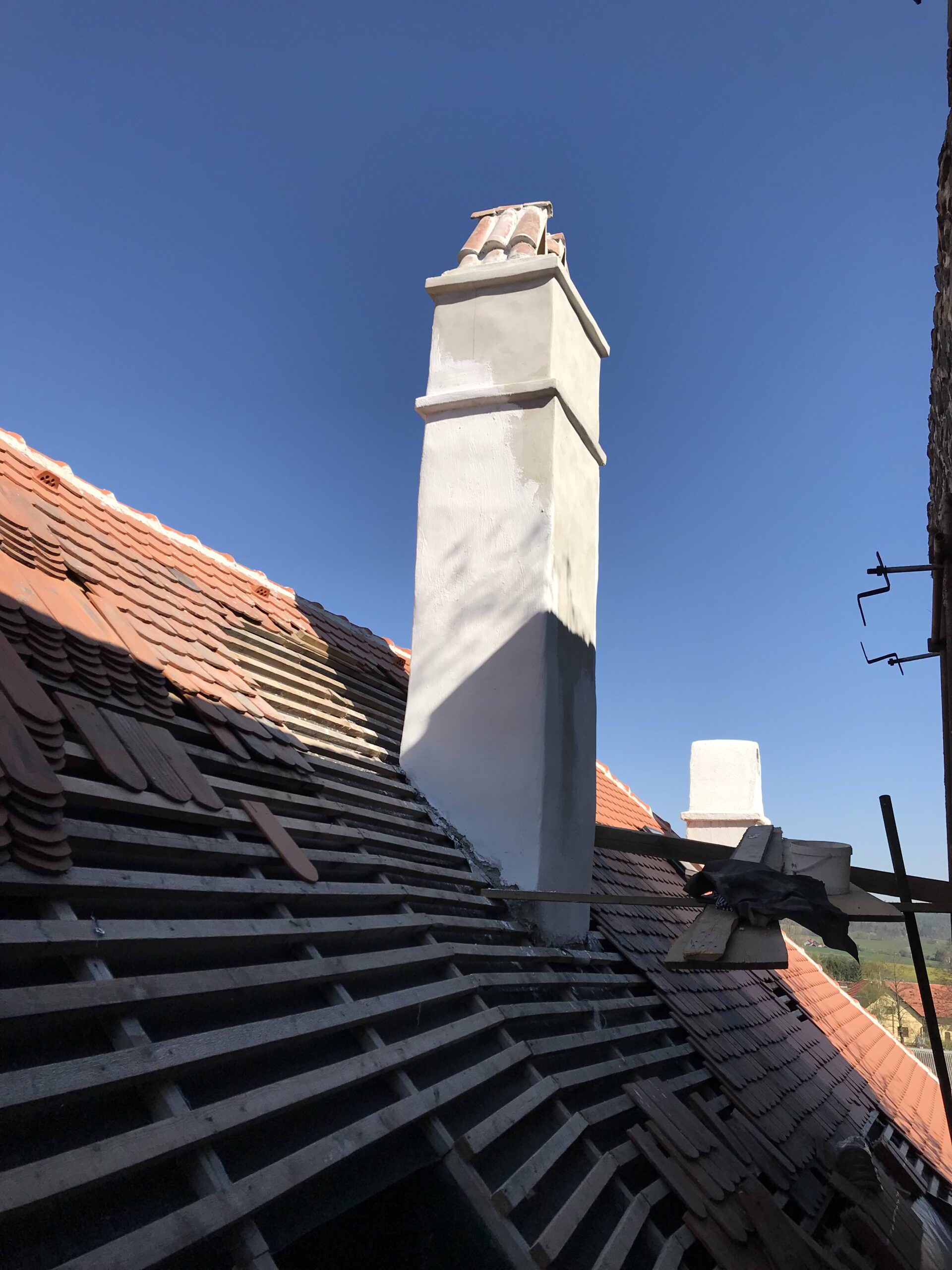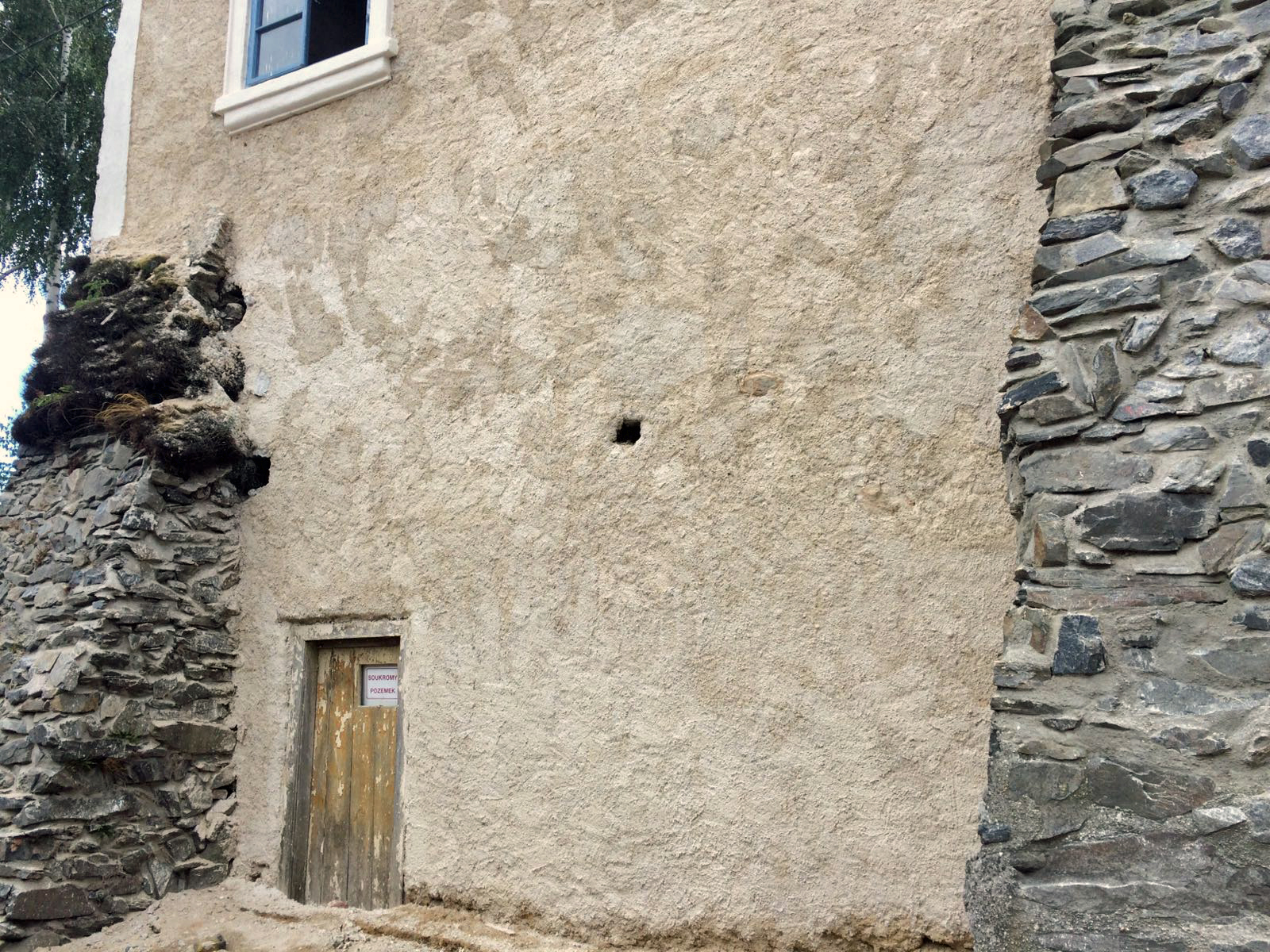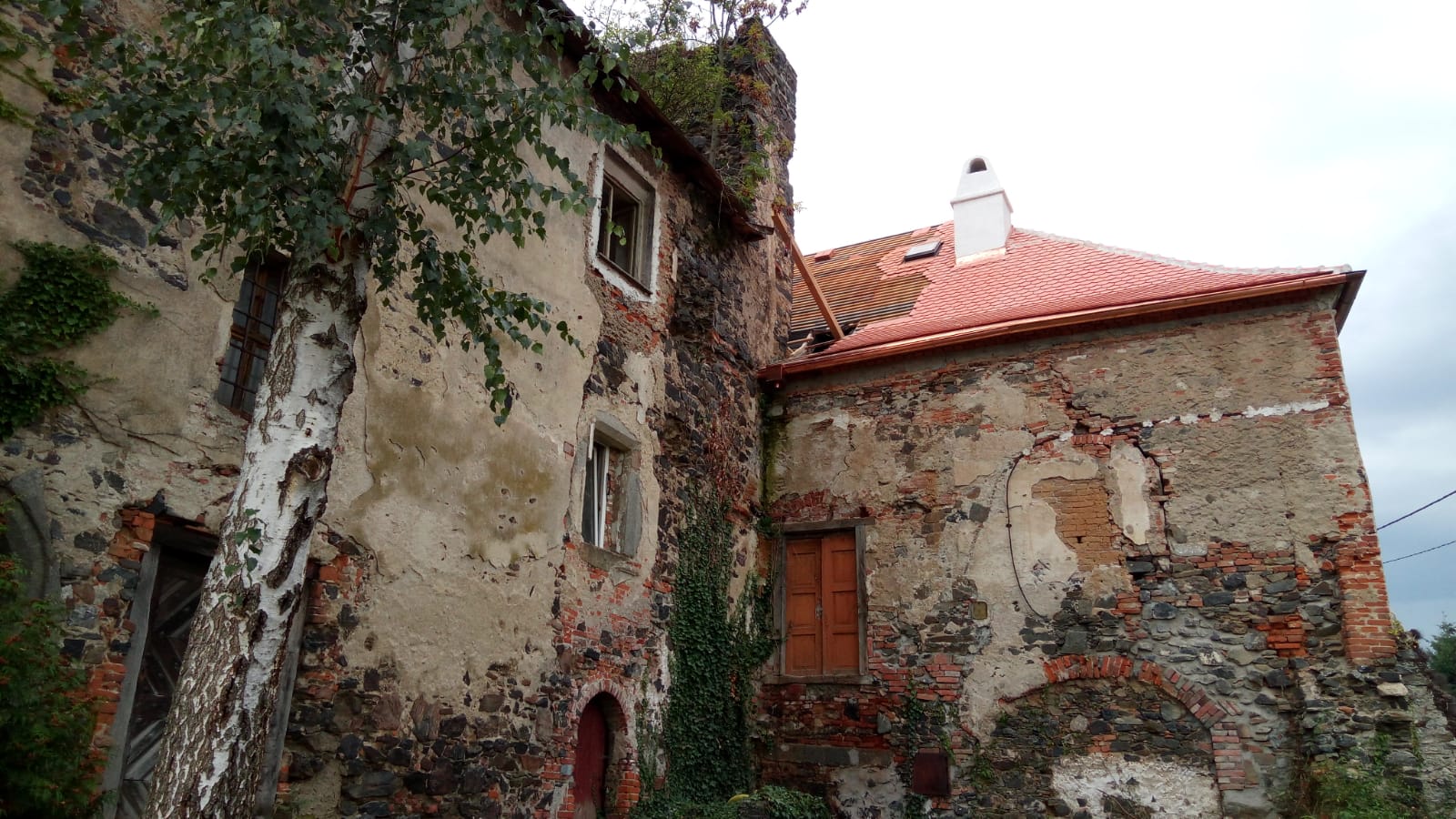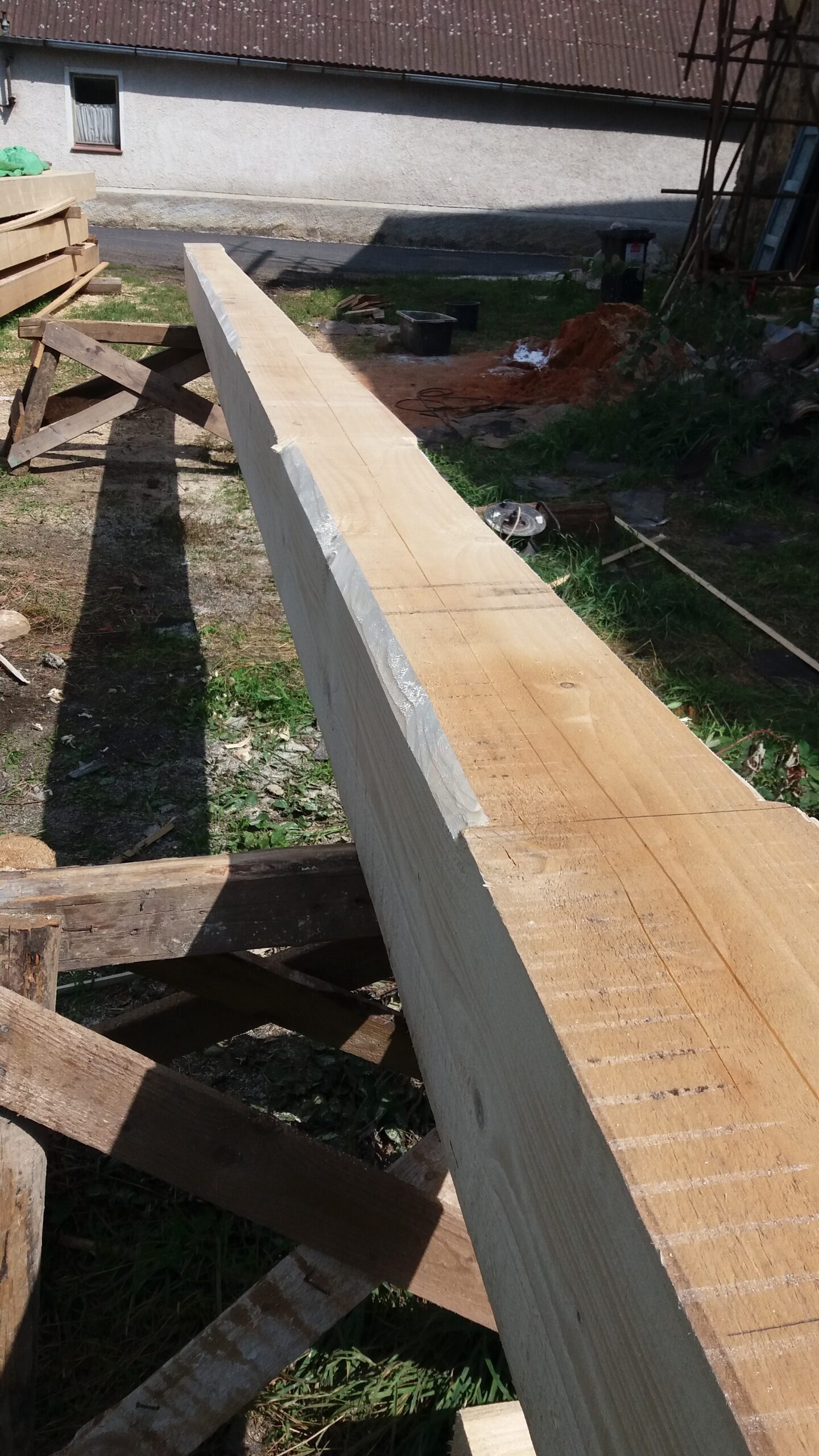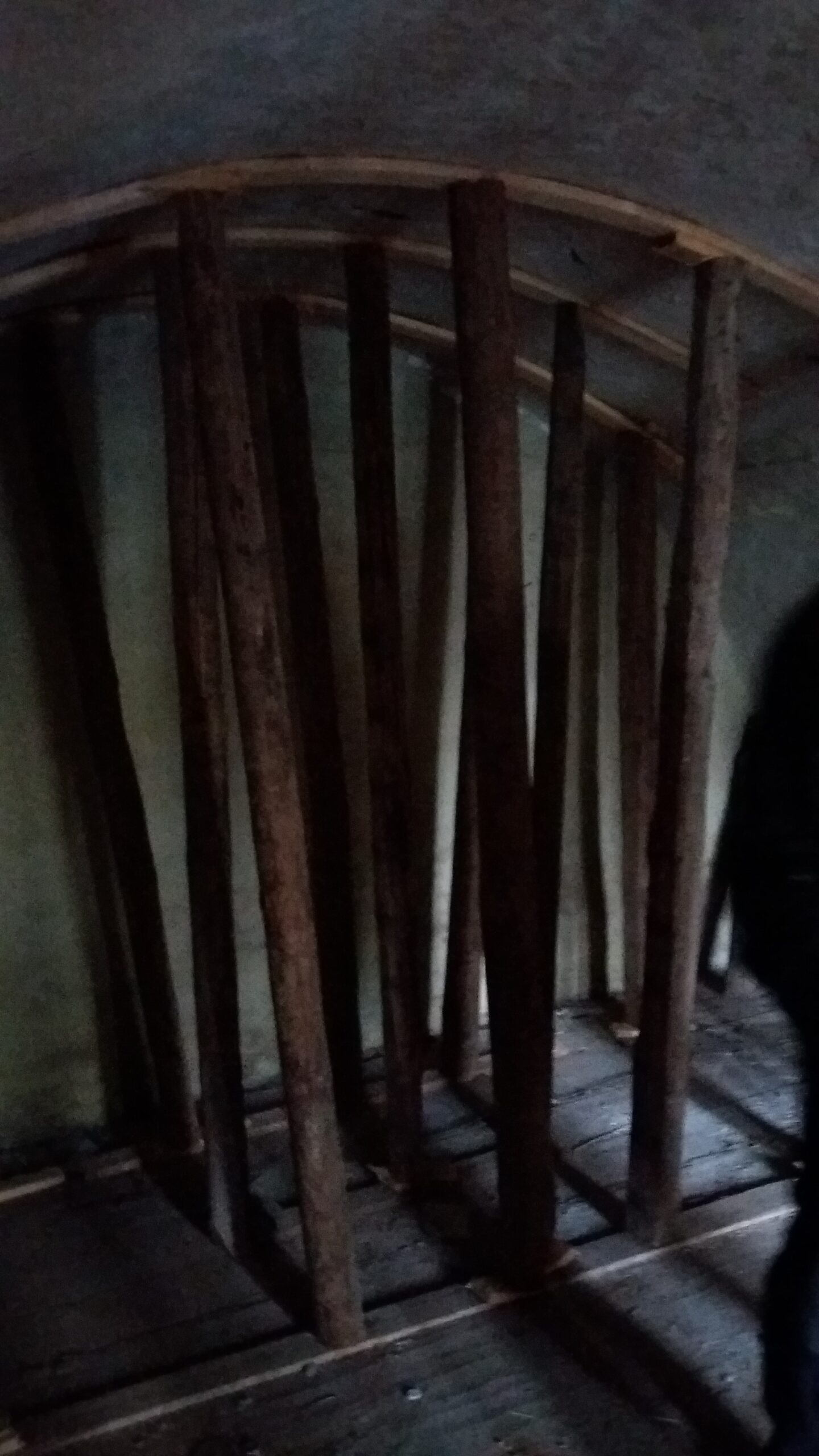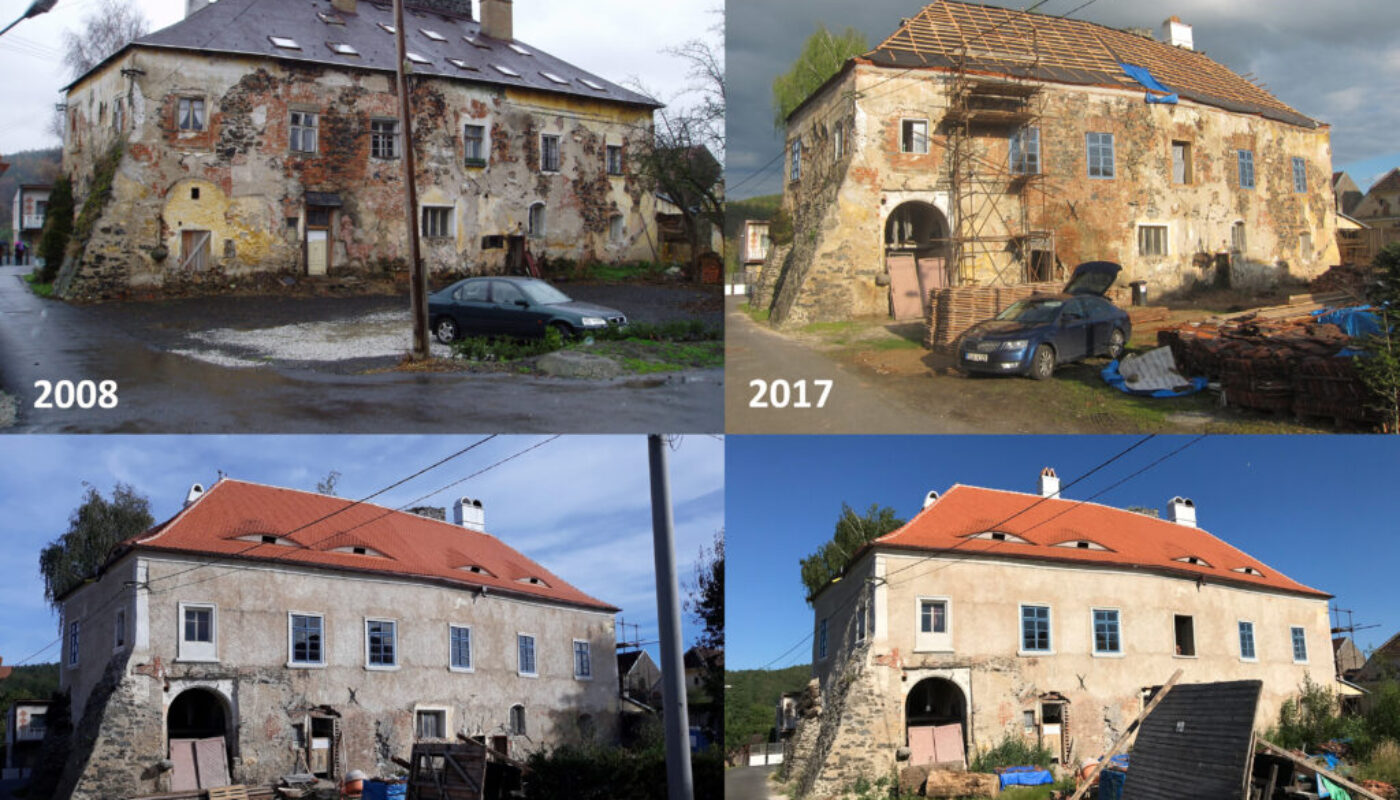
When I got the text message – Call if you want a castle – from a friend in the Czech Republic in 2007, I was sitting in a café in Harlem, in Manhattan. I have always loved history and architecture all my life. When these two loves meet, I am unstoppable. Right away I contacted the real estate broker and wired a deposit on the condition that the advertisement would be withdrawn from circulation. It took another year, but soon a pile of stones called me lord (and the locals started calling me lord of the castle). Yet that was the easiest part. In front of me stood a crumbling cultural monument (designation by the National Landmarks Institute), which obliged me and bound me at the same time. Cultural monuments are subsidized by grants and that was promising, yet in the end their amount did not reach even 10% of the investment.
The village of Dolany, which was in fact the castle and surrounding dwellings, was first mentioned in 1232 as the seat of the lords of Rýzmberk, who came from an important noble family Drslavic (family originating from Pilsen, their first mention is from 1062, four years before the Battle of Hastings, when William of Normandy conquered England). The first nobleman to use the nickname “of Dolan” was Drslav, who died in about 1228, during the reign of the third Czech king, Přemysl Otakar I. Sezim Švihovský is mentioned in Dolany in 1238–1253. In 1380, the Church of the Apostles St. Peter and Paul is founded in Dolany. The patron saint of the church is Dorota (perhaps the widow of Sezem of Dolan), in 1384 the church of St. Peter and Paul is mentioned in the old records of the “libri erectianum” – book records of construction.
The castle consists of three contiguous buildings that correspond to individual, contiguous architectural styles:
Gothic tower
The oldest part of the castle is a residential palace – a Gothic four-story tower, the so-called donjon, from the time when master mason Peter Parler and his sons founded a stonemasons’ lodge near the gothic cathedral of St. Vitus at the end of the reign of the emperor Charles IV, ie the 14th century. At that time, the owner was Lord Půta Švihovský of Dolan, father of the baron Lord Břeněk Švihovský of Rýzmberk and of Dolan, the first Hussite commander who died in battle when he led a counterattack on Monday, March 25, 1420 at the Battle of Sudoměř (after Břeněk’s death the commander Jan Žižka assumed the role as the head of the forming Hussite military). Břeněk was thus the most famous lord of the castle Dolany, as he was significantly involved in the tumultuous history of Bohemia – the Czech Kingdom – at the start of the Hussite reformation at the start of the 15th century. The tower contained a living room with a wood paneling and the appropriate Gothic bow window (medieval toilet). The tower was probably covered with a hip clay-tile roof. Such towers – as some stone pearls of a necklace – formed a system of defensive squire residences along the old medieval transportation road (up to the city limits of Pilsen I would call it Uhlavska, because it copies the south-north flow of this Pilsen river from its source near the German border) from Venice (Italy), Salzburg (Austria), Passau (Germany), Klatovy and Pilsen, Prague (Bohemia) and further to the North Sea and sources of amber. Dolany lies on the shortest south-north line between Venice and the Mediterranean Sea in the south and Szczecin (Poland) and the Baltic Sea in the north.
Around the tower there was a high stone defensive wall, behind which the ring of the water moat was spanned by a stone bridge, to which a wooden drawbridge was connected. The moat was permanently supplied with water by underground wooden pipes from the nearby part of the village “Ovčín”, where the local stream Poleňka originated. The moat was still functional in 1885. Around this time, the tower was turned into a granary and the moat was backfilled with soil. The tower is still awaiting reconstruction.
Renaissance wing
The Švihov aristocratic family of Rýzmberk in Dolany retained the Dolany water castle until the end of the 15th century. Since 1492, when Columbus discovered America for the Europeans, while Queen Isabel, his boss, kept busy and expelled Muslim Moors from Spain, the Dolany castle was owned by the noble family of the Měsíček of Výškov, namely Lord Racek. In 1515, the castle belonged to the brothers Zikmund and Jan Měsíček of Výškov, and it was in this Renaissance period that the space between the tower and the western defensive wall was built and rooms with still preserved rib vaults were created here. At this time, a semicircular bastion was probably built on the south-eastern side of the wall, copying the improvements of the architect Benedikt Rejt in the defensive system of the bastions of the nearby Švihov water castle. It was this Renaissance part of the castle that was in the worst condition and there was a risk of the western wall bulging out, which would cause the irreversible loss of the Renaissance vaults and the collapse of the roof. That’s why I decided to start the repair right here, at the Renaissance wing. The reconstruction took four years. The crown of the perimeter wall was reinforced with a reinforced cast-in-place concrete collar, on which a new wooden truss with a roofing of clay tiles was built. Part of these roofing tiles were recycled from a nearby house in Malechov and from a house in Pilsen, where paratroopers Jozef Gabčík and Jan Kubiš hid during World War II, before they successfully killed Reinhard Heydrich, the German Nazi executioner of the Czech nation. I imagine they were seeing this roof as they were returning to their Pilsner sanctuary, and now this covering adorns the roof of the repaired Renaissance wing.
The building received a new plaster coat – a rough core plaster untreated with a trowel. Where the original facade held firmly, it remained. The color was determined on the basis of the finding of previous remnants of plaster and was determined by the ratio of local float sand from the nearby river Úhlava, red sand and slaked lime. The window openings were enlarged – restored to their original shapes and the external appearance was complemented by new blue casement spruce windows (pigeon blue, the remains of which were found on one of the oldest windows from the Baroque period). The original Baroque trims were restored around the windows. The fittings and the closing system of the windows – espagnolette – were restored and, where it was missing, newly forged by a local artistic blacksmith.
Baroque wing
The youngest part of the castle is the southern part – the baroque wing. Although Bořivoj Měsíček of Výškov was a Catholic, but at the start of the Thirty Years’ War he sided with the Bohemian Protestants and in 1619, the year of the first Thanksgiving in America, he took part in the estate uprising, for which he was forced to sell the castle in 1631. From 1640 the fortress belonged to the Vidršpergár (Wiedersperger) family. At the end of the seventeenth century, the castle was bought by the Jesuits of Klatovy, whose southern, Baroque wing served as the summer residence of the Jesuit order. In the semicircular bastion, the Jesuits placed a chapel and in the space between the tower and the southern wall built two floors with rooms for novices of the order. After the abolition of the order, the Czernin aristocratic family bought the Dolany manor in 1805, in the same year when Napoleon crushed the Russian Tsar and the Austrian Emperor in the Battle of the Three Emperors – the Battle of Austerlitz. The Czernins divided the unused castle into several parts, which they sold as living units among locals.
Today, only the perimeter walls remain in place, the roof was torn down by volunteer firefighters at the instigation of a neighbor who feared that it might fall on his head during stormy winds. This happened before I acquired the castle. There was nothing left but to remove the rest of the roof. I saved the crumbling four-foot thick stone semicircular chapel wall and had it re-built. What’s the plan for this part of the castle? The chapel will return and there will be an amphitheater in the open-to-the-sky part.

